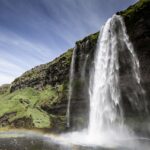Water Cycle Improvement and Long-term Sustainability Plans explained
Water Cycle Improvement in Nevada: Cities like Las Vegas and surrounding agricultural areas are significantly affected
The Great Basin’s Thirsty Story: A Race Against Time
Imagine a giant water cycle constantly in motion, bringing life to the region and then retreating, leaving behind a parched landscape. This is the reality of the Great Basin, a vast desert region in the Western U.S. facing a growing water crisis.
The sun, a relentless force, heats the lakes, rivers, and soil, transforming water into invisible vapor that floats into the air. This evaporation, a crucial part of the water cycle, becomes a precarious balancing act in the Great Basin.
But climate change and increasing water use are tipping the scales. The region is experiencing prolonged droughts, making water even more precious.
This scarcity has far-reaching impacts:
- Drought: The once-reliable water sources dwindle, threatening ecosystems and communities.
- Ecosystem Collapse: As water becomes scarce, delicate ecosystems like the Great Basin’s iconic sagebrush steppe face collapse.
- Economic Hardship: Agriculture, tourism, and industries that depend on water struggle to survive.
The Great Basin’s water cycle, once a predictable rhythm, is now a race against time. This article delves into the intricate dance of water in this arid region, exploring the challenges of water shortages and the potential solutions to secure a future where the water cycle continues to sustain life.
💦💧 The Great Basin’s Thirsty Story: A Race Against Time 💧💦
TL;DR: The Great Basin, a vast desert region in the Western U.S., is facing a water crisis due to climate change and increasing water use. This article explores how water moves through the region, the challenges of water shortages, and potential solutions to secure water for the future.
The Water Cycle: A Desert’s Balancing Act
The Great Basin, a region that includes parts of Nevada, Utah, Oregon, Idaho, and California, is known for its dry climate and limited rainfall. But even in deserts, water still plays a crucial role. Imagine a giant water cycle constantly in motion, bringing water to the region and then taking it back:
- Evaporation: The sun heats up water in lakes, rivers, and even the soil, turning it into water vapor that floats into the air.
- Condensation: As the water vapor rises, it cools down and turns back into tiny water droplets, forming clouds.
- Precipitation: When the clouds get full of water droplets, they release the water in the form of rain, snow, or hail.
- Collection: The precipitation falls to the ground and collects in rivers, lakes, groundwater, or soaks into the soil.
This cycle is important for life in the Great Basin, but it’s also very delicate.
Nevada’s Thirsty Cities: A Balancing Act Under Pressure
Nevada, especially cities like Las Vegas, relies heavily on water from the Colorado River, which flows through the region. The river is a lifeline for many cities and farms, providing water for drinking, agriculture, and industry.
But there’s a problem: The Colorado River is drying up. Climate change is causing less snow to fall in the mountains, and temperatures are rising, leading to increased evaporation. This means less water flowing into the river, putting a strain on water supplies.
And this isn’t just a problem for big cities. Nevada’s agricultural areas, where fruits, vegetables, and other crops are grown, also need water. Farming uses a lot of water, and as water becomes scarcer, farmers are facing tough choices.
A Growing Crisis: The Impacts of Water Scarcity
As water becomes more scarce, the Great Basin faces a number of challenges:
- Drought: The region has experienced prolonged periods of drought, making water even more precious.
- Water conflicts: With limited water, cities, farms, and other users are competing for resources.
- Environmental damage: Less water in rivers and streams can harm fish, wildlife, and ecosystems.
Turning the Tide: Solutions for a Sustainable Future
So what can be done? Here are some important solutions to address the Great Basin’s water shortage:
H3: Conserving Water: Making Every Drop Count
- Efficient appliances: Using water-saving appliances like showerheads, toilets, and washing machines can significantly reduce water use.
- Landscaping: Choosing drought-tolerant plants that need less water for landscaping can save a lot of water.
- Water-wise gardening: Using drip irrigation systems, which deliver water directly to plant roots instead of spraying it over a wider area, can greatly reduce water waste.
H3: Innovative Technologies: A New Generation of Water Management
- Desalination: This technology removes salt from seawater, making it drinkable. It is becoming more affordable and efficient, but it still requires a lot of energy.
- Water recycling: Treating wastewater and reusing it for irrigation and other purposes can be a valuable way to conserve water.
H3: Policy Measures: Working Together for a Sustainable Future
- Water conservation policies: Governments can enact policies that encourage water conservation, such as offering rebates for water-efficient appliances or imposing restrictions on water use during droughts.
- Interstate agreements: Working together, states in the Great Basin can develop agreements to share water resources fairly.
- Climate change mitigation: Addressing climate change is essential for solving water shortages. This means reducing greenhouse gas emissions through actions like using renewable energy sources and improving energy efficiency.
A Collaborative Effort: Climate Rescue’s Mission
The Active Climate Rescue Initiative (ACRI) is working to address the water shortage in the Great Basin. ACRI is a non-profit organization that is dedicated to finding innovative and sustainable solutions to climate change challenges. They are working with local communities, scientists, and policymakers to develop and implement water conservation projects, support water-wise agriculture, and advocate for policies that prioritize water sustainability.
Summary: A Future of Water Sustainability
The Great Basin is facing a water shortage crisis, but there are solutions. By conserving water, using innovative technologies, and implementing smart policies, we can ensure a sustainable future for this important region. The Active Climate Rescue Initiative is working to bring these solutions to life, partnering with communities and organizations to make a difference. By working together, we can secure a water-secure future for the Great Basin and its people.
More on Water Cycle Improvement…
- ## SEO Keywords for Water Cycle Improvement & Long-term Sustainability Plans
- General Keywords:
- Water cycle management
- Water cycle sustainability
- Water cycle improvement
- Sustainable water management
- Long-term water sustainability plans
- Water conservation strategies
- Water resource management
- Water security plans
- Climate change and water resources
- Sustainable water infrastructure
- Integrated water resource management (IWRM)
- Specific Keywords:
- Urban water cycle management
- Agricultural water management
- Industrial water management
- Water reuse and recycling
- Water harvesting and storage
- Groundwater management
- Drought management
- Flood mitigation
- Water pollution prevention
- Water quality improvement
- Water efficiency technologies
- Water footprint reduction
- Water pricing and incentives
- Water education and awareness
- Sustainable development goals (SDGs) and water
- Water governance and policy
- Water risk assessment and mitigation
- Climate-resilient water management
- Green infrastructure and water
- Water and sanitation
- Water scarcity solutions
- Water for food security
- Water for economic development
- Water equity and justice
- Water and biodiversity
- Water and climate change adaptation
- Water and health
- Water and energy nexus
- Long-Tail Keywords:
- Best practices for water cycle improvement
- How to create a long-term sustainability plan for water
- Case studies of successful water management projects
- Water cycle modeling and simulation
- Water technology innovations for sustainability
- Financing sustainable water solutions
- Water stewardship and corporate responsibility
- Water footprint calculator
- Water cycle education resources
- Water conservation tips for businesses
- Water conservation tips for households
- Water scarcity solutions for developing countries
- Water and climate change adaptation strategies
- Water management solutions for urban areas
- Water management solutions for rural areas
- Keywords by Industry:
- **Agriculture:** water-efficient irrigation, precision agriculture, drought-resistant crops
- **Manufacturing:** industrial water reuse, water footprint analysis, water-efficient production processes
- **Tourism:** sustainable tourism and water management, water conservation in hotels and resorts
- **Construction:** green building and water management, storm water management, water-efficient landscapes
- **Energy:** water-energy nexus, water management in power plants, hydropower and sustainability
- Please note:** This is not an exhaustive list, and you can further expand these keywords by adding location-specific terms, specific technology names, and more. It is also crucial to conduct keyword research using tools like Google Keyword Planner or SEMrush to identify the most relevant and high-volume keywords for your target audience.




